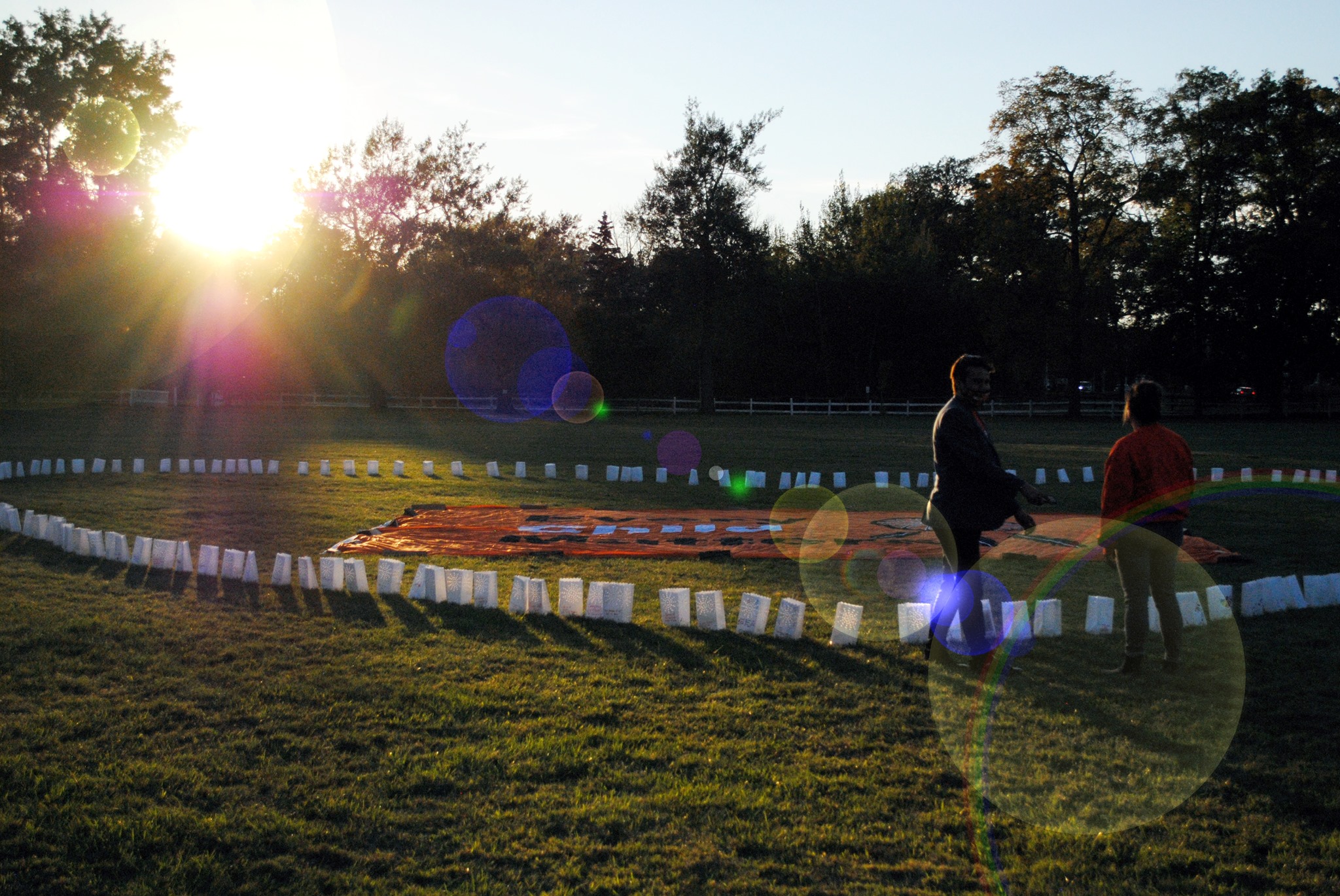 Indigenous people and allies came out in large numbers to mark the first-ever national Truth and Reconciliation at various events across Southern Ontario last week.
Indigenous people and allies came out in large numbers to mark the first-ever national Truth and Reconciliation at various events across Southern Ontario last week.
Orange shirts sold out in stores and online and conversations were sparked all over social media regarding the legacy of residential schools on Indigenous peoples, a conversation that came to the forefront of Canada’s national consciousness after the horrifying discovery of the previously hidden remains of 150 children at a former residential school in May.
Close to home, the Mississaugs of the Credit First Nation came together in a large healing ceremoney, the largest gathering of community members since the pandemic began, with an at-times somber and other times uplifting walk and jingle dress dance at the community’s sacred powwow grounds.
“We talk about truth and reconciliation and truth is the important word there,” said MCFN Chief Stacey Laforme. “If you don’t build on truth, you build on sand and you might as well not even start. The truth is important and we all have to learn it. The only education we do today is by example by showing our love and respect.”
The walk was a wonderful experience, said Chief Laforme.
“There was a time not so long ago in our history where we had almost no language and no culture and didn’t understand who we are. We may have a long ways to go but I am so proud of how far we’ve come.”
It was the largest gathering on the territory since the pandemic started, bringing together community members and allies under the tranquil grove on the Mississaugas of the Credit Powwow grounds after hundreds walked throughout the community from Hwy. 6 down First Line in a sea of orange shirts, all the way to the centre of the community.
Orange shirts symbolize the experience of residential school survivor Phyllis Webstad, the inspiration behind Orange Shirt Day, which is also held on Sept. 30 every year.
The sound of drums and jingle dresses echoing in the grove were a healing salve for many, for the memories of the children lost and for those who survived.
The jingle dress is a healing dance, explained traditional knowledge keeper and dancer Val King-Green.
“A lot of people will ask the jingle dress dancers to come and dance for them if they’re not feeling well. I’ve seen many, many dancers to come and dance together for an event.”
The dancers and drum group took part in an honour song to honour the children and survivors as well as sixties scoop survivors and Indian Day School survivors.
In Burlington, hundreds gathered to hear Indigenous leaders and knowledge keepers speak their truth on residential schools, healing and reconciliation at Spencer Smith Park, where flags flew at half mast and the pier was lit up orange at night to honour residential school survivors.
“I’m so grateful for the spirit in which our city and council have approached these very difficult issues,” said Mayor Marianne Meed Ward. “The discoveries of mass graves at residential school sites have been devastating news. These discoveries have helped start an incredibly important conversation about Canada’s true history. I’m so grateful to have met with Burlington and Halton Indigenous residents who have helped Council in our learning journey around what more we can do to implement Truth and Reconciliation in our city, as well as put into action measures that bring diversity, inclusion and reconciliation. We must acknowledge the generational damage that has been done and continues to this day, and act to right this ship.”
In Hamilton, hundreds came out to participate in the first Every Child Matters 5k run on Saturday at Bayfront Park. Runners from Six Nations were joined by allies from across southern Ontario, with all registration fees going towards the restoration of the Woodland Cultural Centre (former Mohawk Institute Residential School in Brantford).
12 year old Jobi Isaacs ran the whole 5k route in honour of his great grandmother, who is a residential school survivor.
“The reason I ran is because of all the kids in residential schools, all the ones who died and survived. My great-grandma was in one and she survived. A couple of years before I was born, she died. She brought me into this world.”






